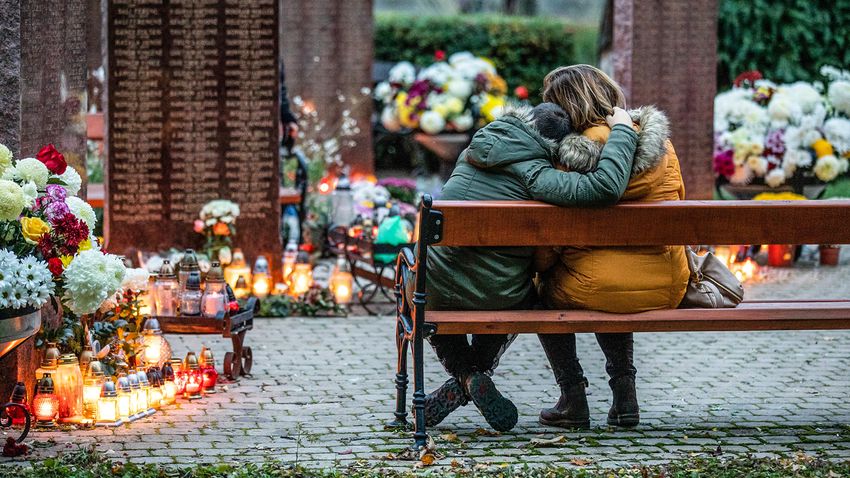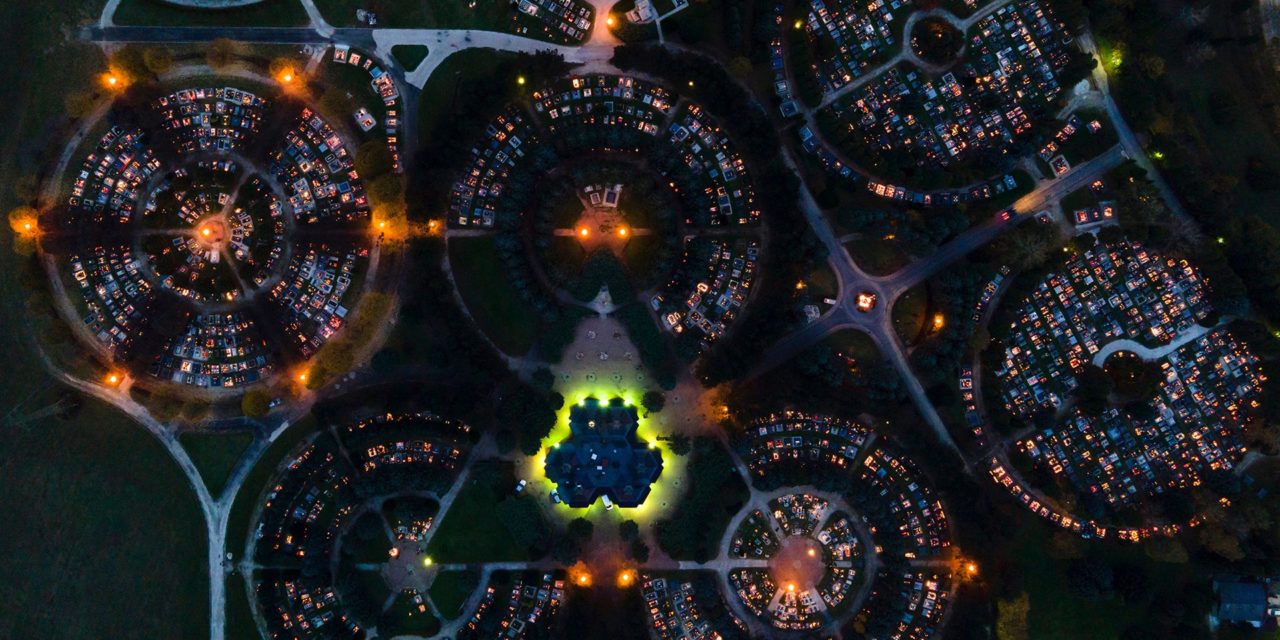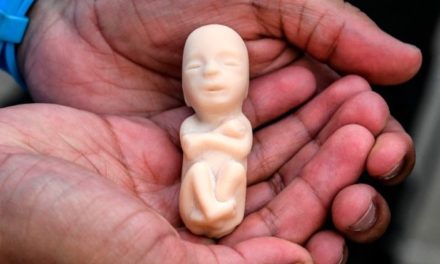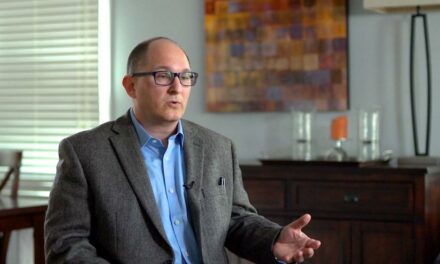According to experts, up-to-date records can only be found in one percent of cemeteries, in other places relatives have to search for the resting place of their loved ones from memory.
All Saints' Day and Day of the Dead is the time to visit cemeteries. At this time, the vast majority of Hungarians visit family graves, light candles, bring wreaths, throw away withered flowers, and prune evergreens. The light of rural cemeteries can be seen from afar on the country roads, as they are lit by hundreds of candles. But only at this time.
Funeral customs in Hungary have changed significantly in recent decades. Members of modern societies try to spend as little time as possible in cemeteries, many actually take care of memorial sites only once a year. In addition, in Budapest and in the larger cities, the redemption of graves is expensive and a significant burden for many families, so they pay even less attention to commemorative activities.
At the same time, it is a national problem that there is mostly no accurate survey of cemeteries, there is a lack of computer maps, and according to experts, only one percent of Hungarian cemeteries have up-to-date information. In the rest, records can be found in various formats, but there are some where there is nothing. Sometimes rotting head trees or ivy-grown, illegible, fragmented headstones are removed and the area opened as a new plot. In many places, there are records managed only by a paper-based method, which is scribbled over many times, making it chaotic and difficult to follow. Elsewhere, they keep an Excel table of the deceased, but due to the lack of a regular map, the information contained in it cannot be linked to the graves.
"I was a beginner cartographer at the university, as the youngest colleague, I had to wait until the end of working hours"
- Zsuzsanna Harkányiné Székely, associate professor of the Hungarian University of Agricultural and Life Sciences, revives the beginnings of Hungarian cemetery GIS.
"One Friday afternoon, the Reformed pastor from Gödöllő came to the department and said that he would like to find a cartographer because there is chaos in the cemetery. They don't have a map, so the burial is a disgrace, they can't follow the redemptions, so they definitely need regular records. I said that of course, no problem, I would go to the land office on Monday, ask for a large-scale map of the city, and use it to digitally create the cemetery. However, I had to see at the land office that the cemetery is like an empty spot in the Gödöllő area, only the fence is shown on the large-scale map. Because I wanted to keep my promise, I gave the cemetery mapping to two students who wrote their homework poorly as a punishment task. The project eventually developed into research, with Tamás Nagy and Pető Szabolcc we published the issues of cemetery GIS for the first time in Hungary."
In the last fifteen years, GIS has undergone serious development. Roads, city and forest registers all use the modern system. In many cemeteries abroad, relatives can use services based on geospatial information, so in Paris, for example, they can look up their relative's grave site and the path to it on a computer next to the entrance. However, not only do these services not exist in Hungary, but as Dezső Sóti, head of the Cemetery Registry, one of the largest companies working with cemetery GIS, says, in many places you can't even find regular maps.
"According to the legislation, all cemeteries should have up-to-date records and maps. However, the majority of them can only show an old version that has been revised a thousand times, which they reserve for government office inspections. From time to time, government offices assess the state of a settlement's cemetery and identify deficiencies. There are places where the maintainer is obliged to plant trees, in other places a fence has to be built, there are usually problems with toilets, and sometimes it happens that local governments or church denominations are required to use GIS. This is relatively rare, as government agencies do not have the capacity to check how up-to-date the records presented are. In many places, there is no question of geodesically correct mapping, but the graves are shown on schematic maps supplemented by hand. Where this is not available, those cemeteries try to print their map from Google Earth, but the government office does not accept this. The maintainers visit the mapping companies after the obligation, but usually they come across such prices that the inquiry does not go further than the request for a quote"
- says Dezső Sóti.
Surveyors also undertake smaller jobs for HUF 60,000 to 80,000. The complexity of the mapping largely depends on the division of the area, how wooded it is, what the topography is like, how regular the cemetery is, so surveying a cemetery costs between five hundred and one thousand forints per grave. This is often an unaffordable amount for small settlements. In the larger cities, the redemption fees would, in principle, be used for the GIS investment, since in Budapest, for example, you have to reach into your pocket for a 25-year redemption. In the countryside, however, the maintenance staff charge a nominal amount, and it even happens that you don't have to pay at all.
According to Dezső Sóti, the residents in the smaller villages are charged even 20,000 forints, which is a minimal amount in national comparison. However, since there is no adequate income for the municipality or the local denomination, they do not spend money on mapping the cemeteries.
"We had to make a separate sign for our colleagues to explain what they do, as the locals in such settlements do not understand what a surveyor is looking for in a cemetery. According to their opinion, the relatives already know where the grave they are looking for is, and Aunt Mari, who has lived in the village for eighty years, will guide those who come from afar. So it makes no sense to spend on this, and it is very difficult for local governments to take action against residents."
- adds Dezső Sóti.
To reduce costs, the company introduced drone photography a few years ago, which brought significant savings for cemeteries with few trees. However, flying a drone has become complicated in recent years. Airspace for seven days must be reserved thirty days in advance, the drone must be insured and inspected, which on the one hand increase costs, and on the other hand, if the weather is not suitable on the reserved days, then the procedure can be started from the beginning. Many companies working with GIS are therefore withdrawing from the cemetery area, as demand is low and there is no money for financing.
According to psychologist Melinda Habis, the fact that death is still considered taboo in Hungary is also a problem. Parents do not take their children to the cemetery, and the custom of saying nothing good about the dead persists, which is not compatible with healthy grief processing.
"Mourning takes a lot of people's coping skills, as it is an extremely painful feeling. A person who is mentally healthy and has normal coping methods can grieve in a healthy way. For this, what is important is what a country's general mental well-being is like and what its culture is like in relation to the deceased"
says Melinda Habis.

Visitors in the cemetery on Fiumei Street in Budapest. Photo: MTI/Balázs Mohai
Shelves of parishes
"The atmosphere in the Austrian or Swedish cemeteries is different, much friendlier than the concrete piles in Hungary. I always tell my students that during their trips abroad, they should not only visit the market, but also the cemetery, as it reflects the mood of the society.
- adds Zsuzsanna Harkányiné Székely, who says that cemetery mapping is actually not just a question of money, since it would also be possible to manage an Excel table in a social collaboration, into which the data from the death registers should be entered. It is true that old registers are often found on the dusty shelves of parishes, and it would be a lot of work to write them down.
At the same time, the database could be helpful for many subsequent researches, so for example it can be shown which age most people died of, how historical events determined mortality, or how the religious structure of the settlement changed. This information is useful both historically and medically.
Government offices do not see the situation as tragic. According to the Nyíregyháza Traffic Office, for example, a change in the map of cemeteries typically occurs when an operator opens new plots or increases the area of the cemetery. The majority of service providers hang the map at the cemetery gates. Over the past few years, they found a service provider that did not do this, the office gave an eight-day deadline to replace the notice, and the cemetery complied.
"In most settlements in Hungary, only the XX. There are real records from the middle of the century. Maria Theresia and II. József issued numerous decrees regarding funerals in Hungary, and it is thanks to them that the cemetery bureaucracy started in Hungary. At the same time, many records have been lost over the years, destroyed, or worse, turned into money. I was also offered such books for purchase"
- says cemetery researcher Tamás Tóth.
As a result of the lost records, the possibility of browsing the graves often remains.
Granite tombstones remain legible, but sandstone or wood will soon become obsolete. Preservation of the landscape is a headache for many rural municipalities, and settlements often try to save money. Mainly because scattered burials are becoming more and more popular. Today, the vast majority of the deceased are cremated, as urn burial is cheaper than casket burial. Scattering is the cheapest, and in many cases it happens that family members scatter it in a river, put it on a bookshelf or bury the ashes in the garden.
Online cemetery register
Despite the change in needs, the reclusion of the population and financial problems, there are cemeteries where mapping and records are in order. Several domestically developed software are available on the market, some with a monthly subscription, others with a one-time purchase.
"In Sopron, we use the Pax cemetery software, which is a legally compliant cemetery cadastre with accurate, immediately updated reports on the deceased, grave site redemptions, and documents. The geodetic survey of our cemetery was also done a long time ago, and since then an engineer has been constantly updating the map in the case of new graves."
- says György Hanzséros, an employee of the Catholic Convention that maintains the Sopron cemetery.
Due to sensitive data, the information is only available to a few employees. Relatives from afar must visit the convent, because there they can tell the exact location of the deceased's grave.
The situation is similar in Budapest. The Budapest Burial Institute currently uses two cadastral modules of the IG city management GIS software family in eight cemeteries for internal use and to support daily work. The service is available in Rákospalota, Kispest, the Megyer cemetery, Budafok, Csepel, Lőrinci, Pesterzsébet and Óbuda cemeteries. According to the institute's statement, "in recent years, due to the well-known lack of resources, further steps have not been possible", but as an infrastructural development, they want to make the systems accessible to the general public. The data of the IG-Cemetery is intended to be made available on the website, so that families can more easily access the most sought-after information, such as the exact number of the resting place, its location in the cemetery, and the list of those buried in it.
Visitors to Újfehérto no longer have to wait. In the municipality-maintained cemetery, a cemetery cadastre was created in which relatives can access the cemetery register online, and can search for which plot in which row of which grave their loved one is buried. Mobile internet will soon no longer be needed, as a Wi-Fi station is being built in the cemetery as part of the Wifi4EU project.
In search of relatives
"The current Újfehértó cemetery has existed since 1981. We have also experienced the problem that occurs in many settlements, that the cemetery books were not kept properly for a long time.
- explains József Hosszsef, mayor of Újfehértó. - From 1998, the registers in the settlement are normal, but before that they are very fragmentary. Just now, we conducted a survey for the Day of the Dead, we are looking for the relatives of the neglected graves, and we were once again confronted with the previous careless record-keeping. There are also two closed cemeteries and two Israeli cemeteries in the city. The church records are more accurate than the initial municipal records, but many of the graves have already collapsed. Today, the municipality has photos of each grave, and they can be easily searched in the online system.
Relatives coming from afar are also helped by public lighting and surveillance cameras. All in all, a municipality has to spend so that our ancestors can rest in suitable conditions, although it is true that the maintenance of cemeteries consumes a large amount of money. However, photographing the graves with a phone and uploading the data to a database is also possible with a small IT investment.
According to the mayor's opinion, the settlements should look for various tender sources, although in Újfehértó the cemetery GIS was implemented with its own funds. In the Hungarian Village Program, you can apply for cemetery renovation, but there was already money available for mapping, and EU funds can also be found. The Lechner Knowledge Center is currently working together with the European Cemetery Association for the purpose of digital cemetery mapping in Hungary. The way is also open for the local governments to enter into agreements with the cemetery service providers in addition to the tender resources and the price of the grave redemption, so that they also take part in the operation of the cemetery, so that the local government has the opportunity to transfer to GIS.
The experts agree that GIS is also a useful tool for environmental management and job creation, so it is worth investing in it. However, the road is still long.
Reliable data
Hungarian burials in the Middle Ages corresponded to Western European customs: graves were located in the garden of the church and outside it. Kings and nobles, urban citizens and ecclesiastical dignitaries were buried directly in the churches, the peasants in the consecrated ground around them.
The Turkish conquest put an end to burials within the city walls, as most of the Christian churches were converted into mosques. A significant part of the country was depopulated as a result of the Turkish conquest, with the settlement the Swabians brought new customs, including the need and methodology of more extensive records, bureaucracy. This is Mária Theresia and
II. It was sanctified by the decrees of József, who for reasons of hygiene on the one hand abolished the crypts, and on the other hand introduced register keeping.
The XIX In the 19th century, numerous registers were prepared, and in 1895 the Register Act was also passed. The XX. At the beginning of the 20th century, the world wars brought serious destruction to the cemetery records, so reliable data can only be found in many places from the 1950s.
Source: magyarnemzet.hu. Orsolya Gondán-Jancsó. In our opening picture, candles and candlesticks illuminate the cemetery in Zalaegerszeg on All Saints' Day, November 1, 2020. Aerial view. Photo: MTI/György Varga












